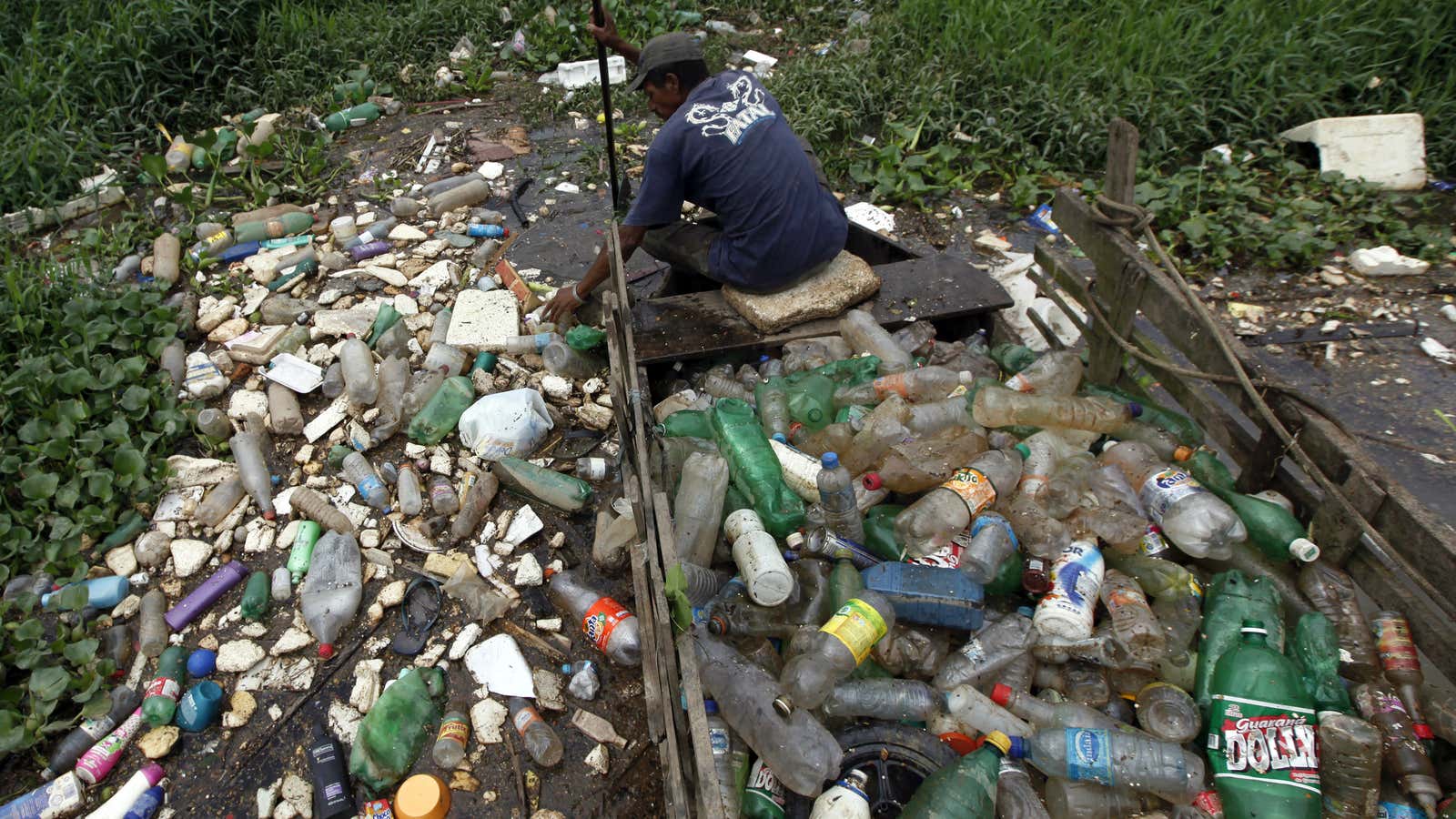There’s an estimated 311 million tons of plastic (pdf) produced every year across the world. There will be more plastic than fish in the sea by 2050, it’s probably in our food, and will likely leave its mark long after we’re gone.
Polyethylene terephthalate (known as PET), which is used for manufacturing plastic bottles, makes up one fifth of the annual production of plastic. PET’s strength and stability under heat makes it an ideal material for packaging—it’s one of the world’s most-used plastics for a reason—but it’s properties also makes PET difficult to decompose (pdf).
Enter Ideonella sakaiensis, a newly discovered bacterium that feeds on PET. Researchers in Japan isolated the bacteria from the 250 samples of PET debris they collected from a recycling plant. The bacteria appeared to use a pair of enzymes to slowly break down PET.
“If you put a bacteria in a situation where they’ve only got one food source to consume, over time they will adapt to do that,” lead researcher Enzo Palombo, from Swinburne University, told The Guardian. “I think we are seeing how nature can surprise us and in the end the resiliency of nature itself.”
Researchers note in the study, published in the journal Science, that it takes the bacteria six weeks to degrade a small piece of low-quality PET. The bacteria took even longer to degrade highly crystallized PET. Researchers warn that the bacteria would—for now— have limited impact if it were to be applied to large amount of plastic waste sitting in landfills around the world.
But the discovery of the bacterium is an important first step, according to researchers. The ability to degrade PET using enzymes has previously been limited to a few species of fungi. With further experiments, researchers hope to be able to develop a greener alternative to reducing plastic waste.
For now, people should make more of an effort to recycle PET—particularly PET bottles, which is easier and cheaper to recycle (pdf). Close to half of PET in the world is not even collected for recycling; only 7% is recycled bottle-to-bottle, according to The World Economic Forum (pdf).
